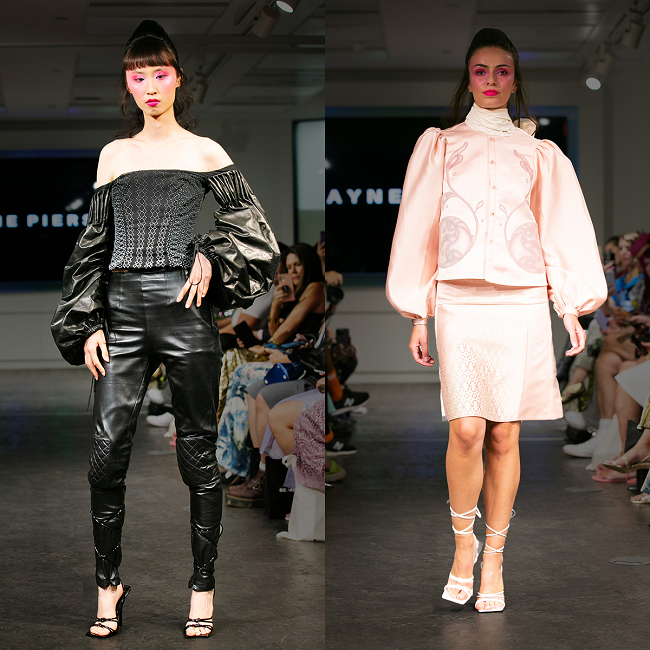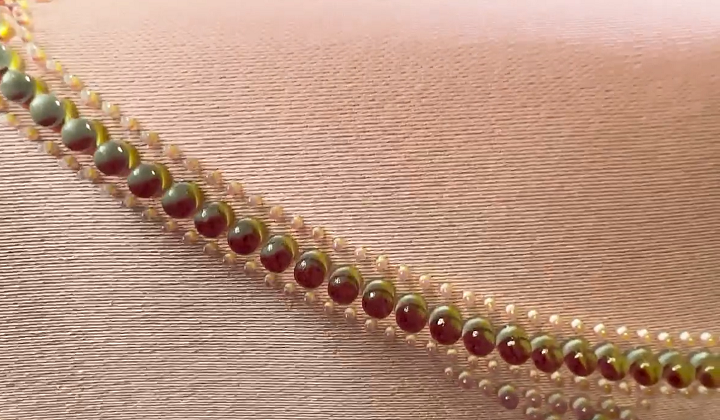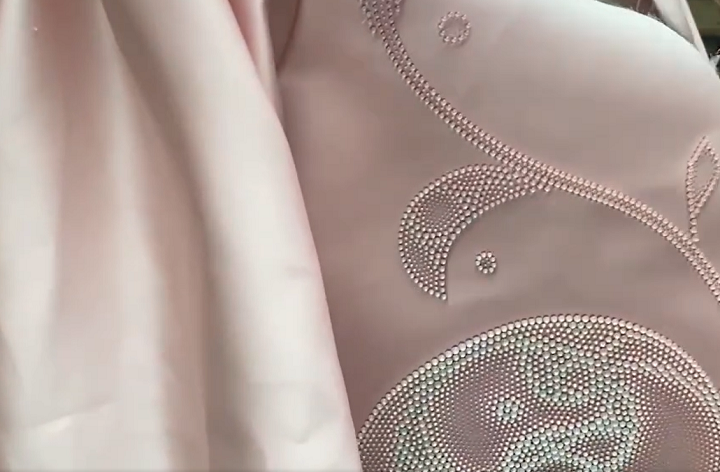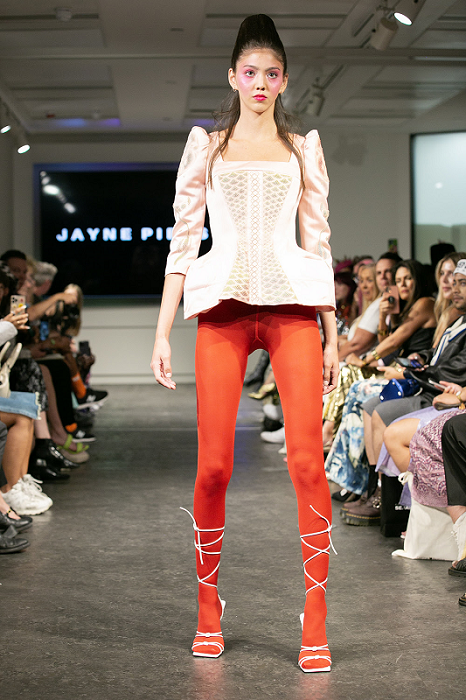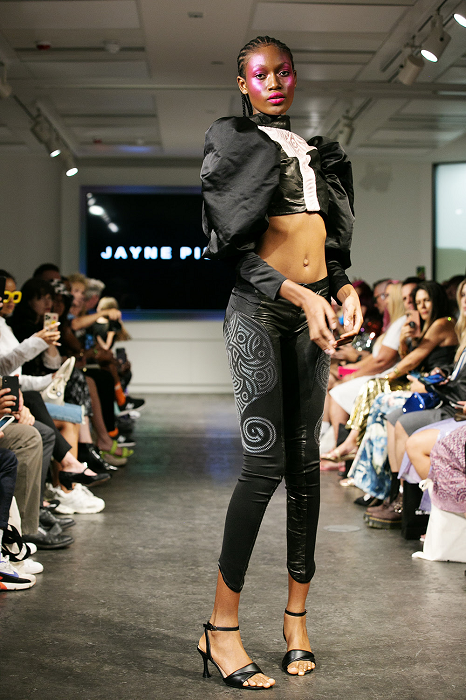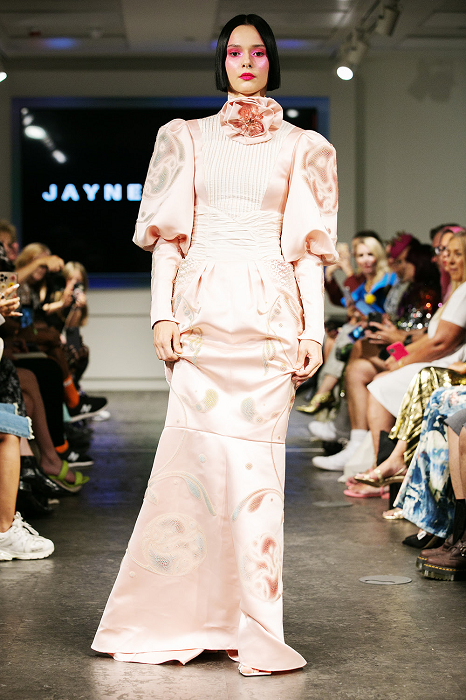At the recent London Fashion Week, 3D printing was on the runway once again, as renowned fashion designer Jayne Pierson unveiled her latest collection, created via a strategic partnership with Stratasys and its direct-to-textile 3DFashion technology. 3DFashion allows designers to adhere materials, both full-color and translucent, rigid and flexible, directly onto garments and textiles, pushing the boundaries of fashion and creating out-of-this-world designs and optical illusionary effects so fantastic, you can’t help but stare.
Pierson’s enchanting Ceridwen collection was inspired by Celtic mythology and the Mabinogion texts—Middle Welsh prose “concerned with the heroic age or mythological past of the British Isles.” At the center of the collection is Ceridwen herself, the shape-shifting Celtic goddess of rebirth, transformation, and inspiration. The pieces in the collection, with their nature-inspired organic shapes, combine history, myth, and folklore, and truly show how fashion, just like music or artwork, can tell an epic story. The unique garments were also adorned with iridescent components, integrated into the fabric—thanks to 3DFashion—to act as amulets, again calling on mythology.
“Jayne’s imperial garments are eloquently demonstrating how design vision can come to life with industry-certified materials and new digital technologies to change the way we dress. The collection is a wonderful expression of Welsh Celtic heritage and innovation,” said Naomi Kaempfer, Creative Director at Stratasys.
Also symbolizing Celtic magic were fabrics with lenticular designs made from recycled ocean plastics and end-of-rolls, provided by Solaris Community, a global B2B supply chain platform for circular solutions. These discarded materials were transformed into modern armor, and go hand-in-hand with Pierson’s commitment to ethical and socially responsible practices and sustainable slow fashion, as opposed to wasteful fast fashion.
The beauty of 3D printing is that it can enable more sustainable fashion, and Pierson isn’t the only one who’s noticed. Designer Julia Daviy used the technology to create biodegradable fashion, as has Ganit Goldstein, another Stratasys partner. We see 3D printed shoes being made more sustainably, with biodegradable material, and accessories like purses are as well. The fashion industry is extremely wasteful, so to see designers turning to advanced technologies like 3D printing to make more sustainable collections is really great.
“I’m excited to work with Stratasys and their 3DFashion technology to present a new collection that captures my vision in a truly unique way,” Pierson said. “The collection is bespoke with zero waste and made precisely to client specifications, thus eliminating volume production of any kind and ensuring we maintain the core values of our brand, which are circularity, sustainability and social responsibility.”
In addition to circularity, Pierson also values stylistic longevity, quality, and originality in her brand, and another main focus of the collection was inclusivity and individuality. The award-winning designer stressed that each garment is bespoke and made to order to accommodate diverse body types, and not just sample sizes. This also goes hand in hand with sustainability, because Pierson is committed to producing in limited editions, rather than scale. Ceridwen was an enchantress, and symbolizes determination and the ability for us to become anything we aspire to be, so the collection also shared a message of empowerment as well.
The designer is also committed to unique partnerships, and in addition to Stratasys and Solaris Community, Pierson also worked on her collection with advanced manufacturing technologies advisory boutique nuForj, and artist, architect, and educator Travis Fitch, another Stratasys fashion designer. The Ceridwen collection, and Pierson’s commitment to sustainability, definitely made a powerful statement about fashion and its future. As we work to ensure the future of our planet, 3D printing illustrates the potential for brands to be more ethical and less wasteful, while still remaining prosperous.



